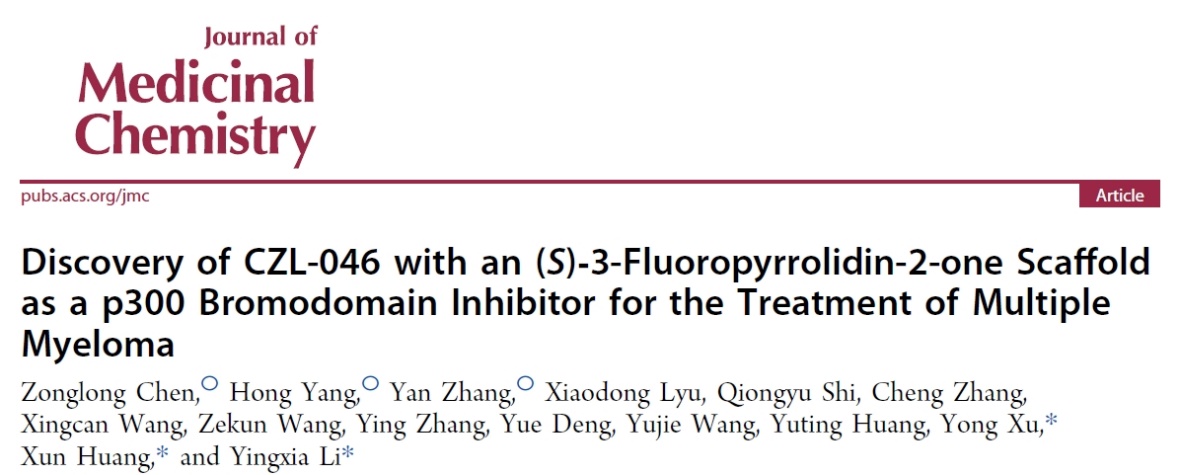
E1A binding protein (p300) and CREB binding protein (CBP), described as p300/CBP, are two highly homologous and multidomain histone acetyltransferases. The bromodomain (BRD) and catalytic domain of p300/CBP synergistically regulate the level of the acetylated lysine of histone, which impacts related gene expression. The initiation and development of cancer are often accompanied by dysregulation of p300/CBP and evidence supports that inhibition of p300/CBP is a potential therapeutic strategy for cancer treatment.
Professor Yingxia Li’s group at the School of Pharmacy, Fudan University, has reported various novel p300/CBP inhibitors targeting the BRD or KAT and p300/CBP PROTAC degraders (Eur. J. Med. Chem. 2019; Bioorg. Chem. 2022; Bioorg. Med. Chem. 2022; J. Med. Chem. 2024), with candidate compounds exhibiting strong potency in vitro and in vivo.
Recently, Professor Li’s group, in collaboration with Professor Xun Huang’ group at Lingang Laboratory and Yong Xu’ group at Guangzhou Institutes of Biomedicine and Health, Chinese Academy of Sciences, reported the discovery of CZL-046 as a novel p300 BRD inhibitor for the treatment of multiple myeloma (MM). This work was published in the Journal of Medicinal Chemistry entitled “Discovery of CZL-046 with an (S)-3-Fluoropyrrolidin-2-one Scaffold as a p300 Bromodomain Inhibitor for the Treatment of Multiple Myeloma”.

Professor Li’s group discovered a series of novel p300 BRD inhibitors containing a pyrrolidin-2-one moiety through scaffold hopping strategy in the previous work, with compound 5 identified as a promising molecule. In this work, Professor Li’s group focused their efforts on the structural optimization of 5 to improve the metabolic properties. Metabolism analysis in mouse hepatocytes was conducted to determine the metabolic sites of compound 5, based on which CZL-046 was discovered through the rational drug design and the structure-activity relationship studies. CZL-046 suppressed the mRNA expression of c-Myc and IRF4 and decreased the level of H3K27Ac in the OPM-2 cell line. Oral administration of CZL-046 with 30 mg/kg achieved a tumor growth inhibition value of 44% in the OPM-2 xenograft model, accompanied by good tolerability. The cocrystal structure of CBP BRD with CZL-046 provides an insight into the precise binding mode, convenient for the design of this series of p300 BRD inhibitors. The results demonstrate that CZL-046is a promising p300 bromodomain inhibitor for the treatment of MM.

Zonglong Chen, a PhD candidate at the Department of Medicinal Chemistry, School of Pharmacy, Fudan University, Hong Yang, at Lingang Laboratory, and Yan Zhang, at Guangzhou Institutes of Biomedicine and Health, Chinese Academy of Sciences, are co-first authors of this article. Professor Yingxia Li, Professor Xun Huang, and Professor Yong Xu are joint corresponding authors. This work was supported by grants from National Natural Science Foundation of China and Science and Technology Commission of Shanghai Municipality, Shandong Province, and Guangdong Province.
Link to original article: https://pubs.acs.org/doi/10.1021/acs.jmedchem.4c01984